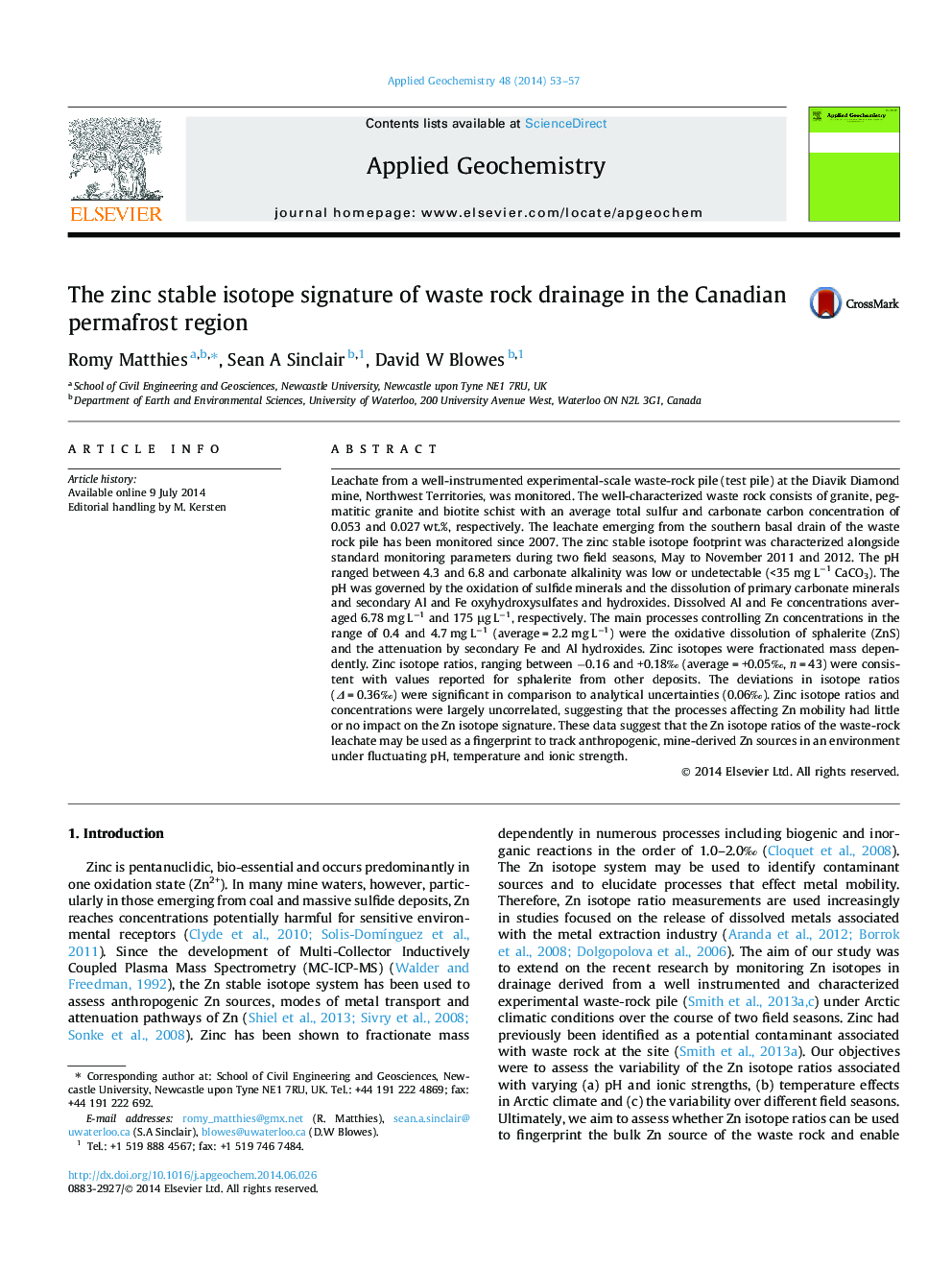| Article ID | Journal | Published Year | Pages | File Type |
|---|---|---|---|---|
| 4435785 | Applied Geochemistry | 2014 | 5 Pages |
•The leachate of a waste rock pile in Arctic Canada was monitored.•Zinc isotope ratios in the leachate were monitored over two field seasons.•Isotope ratios varied within −0.16‰ and +0.18‰ compared to IRMM 3702.•Processes governing zinc mobility appear not to influence the isotope signature of the leachate.
Leachate from a well-instrumented experimental-scale waste-rock pile (test pile) at the Diavik Diamond mine, Northwest Territories, was monitored. The well-characterized waste rock consists of granite, pegmatitic granite and biotite schist with an average total sulfur and carbonate carbon concentration of 0.053 and 0.027 wt.%, respectively. The leachate emerging from the southern basal drain of the waste rock pile has been monitored since 2007. The zinc stable isotope footprint was characterized alongside standard monitoring parameters during two field seasons, May to November 2011 and 2012. The pH ranged between 4.3 and 6.8 and carbonate alkalinity was low or undetectable (<35 mg L−1 CaCO3). The pH was governed by the oxidation of sulfide minerals and the dissolution of primary carbonate minerals and secondary Al and Fe oxyhydroxysulfates and hydroxides. Dissolved Al and Fe concentrations averaged 6.78 mg L−1 and 175 μg L−1, respectively. The main processes controlling Zn concentrations in the range of 0.4 and 4.7 mg L−1 (average = 2.2 mg L−1) were the oxidative dissolution of sphalerite (ZnS) and the attenuation by secondary Fe and Al hydroxides. Zinc isotopes were fractionated mass dependently. Zinc isotope ratios, ranging between −0.16 and +0.18‰ (average = +0.05‰, n = 43) were consistent with values reported for sphalerite from other deposits. The deviations in isotope ratios (Δ = 0.36‰) were significant in comparison to analytical uncertainties (0.06‰). Zinc isotope ratios and concentrations were largely uncorrelated, suggesting that the processes affecting Zn mobility had little or no impact on the Zn isotope signature. These data suggest that the Zn isotope ratios of the waste-rock leachate may be used as a fingerprint to track anthropogenic, mine-derived Zn sources in an environment under fluctuating pH, temperature and ionic strength.
